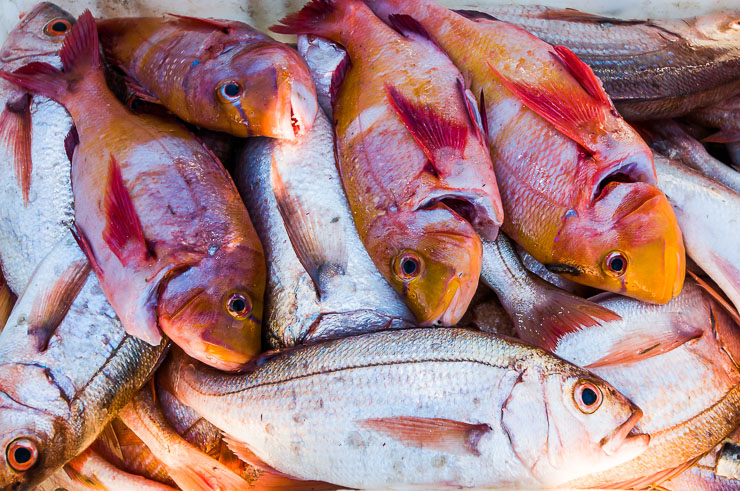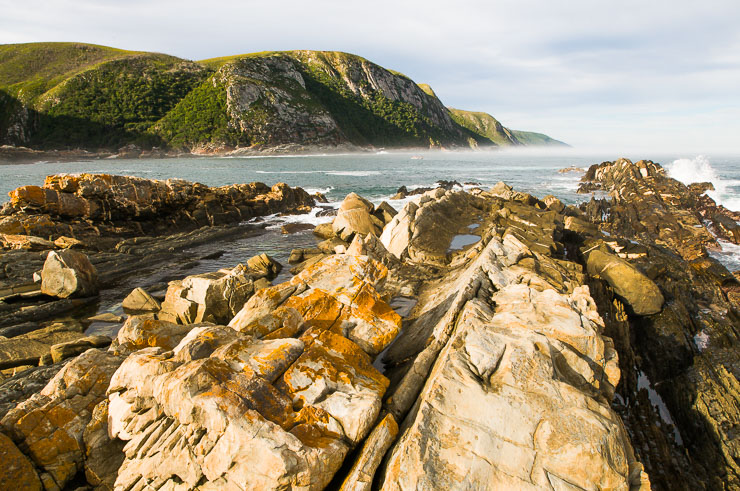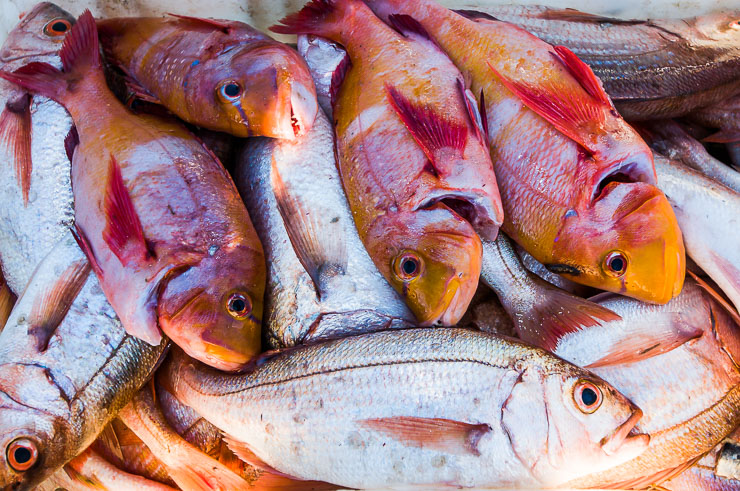
11 Dec Marine ‘Kruger park’ opened for fishing
Marine scientists are concerned that opening South Africa’s largest marine protected area will rapidly reduce stocks of endangered fish species, reports Louise de Bruin

Tsitsikamma provides breeding grounds for 11 of South Africa’s 17 threatened fish species. Photo © Peter Chadwick
The protected area on the Garden Route is regarded as the marine equivalent of the Kruger National Park, and provides refuge and breeding grounds for 11 of South Africa’s 17 threatened fish species.
A pilot fishing trial starts on December 15 – pre-empting by 48 days a public comment period on the rezoning of the marine protected area.
WWF-SA estimated in 2006 that fish stocks built up in Tsitsikamma could be fished out within about 33 days should it be opened to fishing. A WWF report showed that removing protection from the marine park would have negative economic consequences on local communities.
“Opening the protected area to fishing from December 15 2015 to February 1 2016 will have serious consequences for the long-term sustainability of the living resources and ecosystems,” said Bruce Mann, senior scientist for the Oceanographic Research Institute.
“Much research has taken place on the fish species found along the Tsitsikamma coastline and this has shown that many of the species are very slow growing and highly resident.”

‘Fish reproduction and growth can no longer keep up with the rate of fishing’
Two previous environment ministers, Mohammed Valli Moosa and Marthinus van Schalkwyk, both declared that line fish were in a state of emergency due to their extremely depleted and over-utilised status.
The previous ministers said that by no means should the Tsitsikamma marine protected area be opened up to fishers because it provides a breeding reserve for reef fish that reseed adjacent line fishing areas.
During past attempts in 2013 to open the area, WWF urged the government to engage with national environmental stakeholders and civil society about a national biodiversity asset that serves a nationally important fisheries role, succeeding in halting the move.
While SANParks says the pilot fishing phase was granted based on the National Environmental Management: Protected Areas Act, no environmental impact assessment was conducted by a recognised scientist.
Environment Minister Edna Molewa published draft regulations in the Government Gazette to rezone the Tsitsikamma marine protected area to allow fishing for locals living in the KouKamma municipal area, or within eight kilometres of the coast between the Bloukrans River and Covie.
Once registered, they will be given permits to fish in four areas that make up about 20% of the marine protected area.
Public comments
Pending public comments on the proposals, eligible anglers will be allowed to fish four days a month until at least April. The pilot project is intended to test whether it is feasible to open the four areas permanently, said SANParks’ spokesperson Nandi Mgwadlamba.
But concerned marine scientists likened the move to allowing communities in areas adjacent to the Kruger access to hunt in the world-renowned park.
Mann highlighted the importance of no-take marine protected areas: “The reasons for the loss of fish are many, but the common and most significant explanation across all parts of our coast is that too many have been caught.
“Anglers and professional fishers have continuously improved their fishing gear, and exploited every beach and headland, every estuarine backwater and offshore reef. Fishing regulations are flouted with impunity.
“Fish reproduction and growth can no longer keep up with the rate of fishing. Some species are now so rare as to be red-listed by the IUCN as threatened with extinction.”
The South African National Biodiversity Institute (SANBI) has also done in-depth research into the role Tsitsikamma has played in conserving marine biodiversity, and what the key implications would be if the area is opened to fishing.
Kerry Sink, marine programme manager at the institute, noted that recreational and other types of fishing are globally recognised as a pressure on marine biodiversity at the genetic, species and ecosystem level.
“Opening the Tsitsikamma marine protected area would exacerbate this situation. Fishing poses the greatest threat to marine biodiversity in South Africa, the Agulhas bioregion and to Tsitsikamma,” Sink said.
Mgwadlamba said the environment department and SANParks had a dual function of providing benefits for society and of ensuring that such benefits are protected for future generations.
“The trade-offs between the flow of benefits and the protection of resources that provide benefits are complex and subject to continuous change as human needs evolve and as new knowledge accumulates.
“The decision for rezoning the Tsitsikamma marine protected area is motivated by various reasons, some subsistence, cultural, historical and recreational. Fish stocks are better protected by cooperation with local communities than by attempting to exclude them from having any access at all,” Mgwadlamba said.
Andrew Campbell, chief executive of the Game Rangers’ Association of Africa, said although it was important for communities to benefit from conservation areas, “we need to be careful when setting precedents that may threaten the very biodiversity that protected areas are meant to conserve”.
